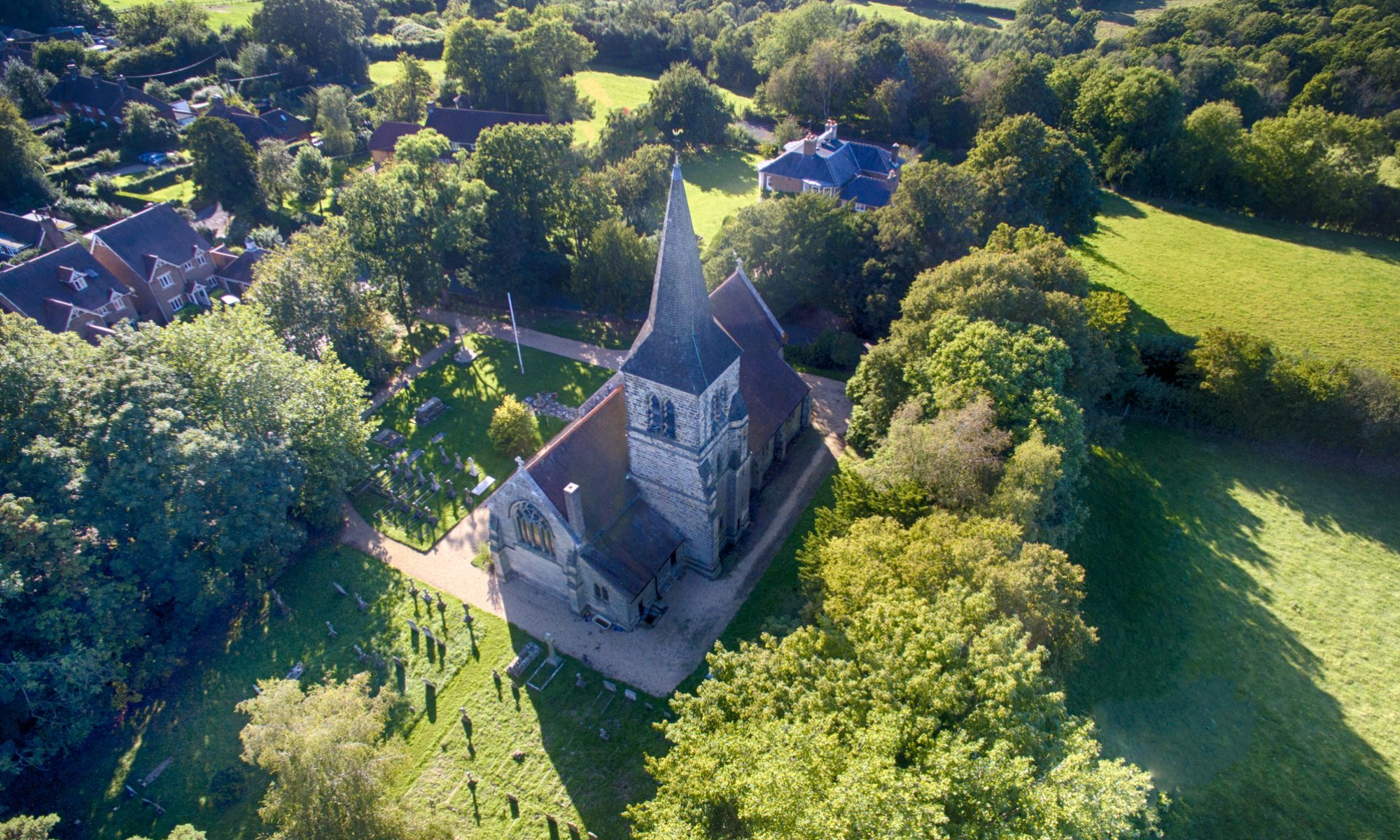All Saints church was founded in 1884 owing to the determination and generosity of two sisters from Bavaria, Caroline Ilsemann Weguelin and Frances Sarah Kirby.
John Kirby was a barrister and came to live with his wife Frances and her sister Caroline, in Highbrook in 1857. The family were Lutheran Protestant.
Before the opening of All Saints Church, when winter weather was too harsh for people to make the trek to Saint Margaret’s in West Hoathly, services were held in the old schoolroom in Highbrook, by Henry Harris, an ordained minister and schoolmaster at Ardingly College. Queen Victoria gave permission in Council on 30* November 1882 for the creation of a separate parish of Highbrook and for the building of a church. The information concerning this permission was published in the London Gazette on 5th December 1882.
The land upon which the church is built was given by Stephenson Clarke of Brook House, in the parish. The two sisters gave £4000 and Stephenson Clarke £2000. The foundation stone was laid by Frances Kirby on 23rd April 1884. The architects for the church were Carpenter & Ingelow of London. The design is Early Decorated style. The builder was Mr George Box of Ardingly. The church is built of sandstone, lined with brick and finished with stucco. It was consecrated by Doctor Durnford, Bishop of Chichester, on 15th October 1885. It holds 200 people and was full to capacity at its opening.
The first incumbent was Henry Harris.
Since the time of Henry Harris (1884-1904) there have been a further eight incumbents:
Mostyn Williams (1904-1926)
Aikman Wilson 1926-1931)
John Phillips (1932-1937)
Cyril Valentine (1937-1956)
Laurence Browne (1957-1964)
Guy Bowden (1965-1974)
In 1975 the parish was combined with West Hoathly to form a united benefice.
Michael Allen (1975-1991)
Alan Carr (from 1992.)
Lionel Whatley (2012 – 2016)
Nicol Kinrade (2018 – 2022)
Heather Wilkin (2023 to present)
As can be seen from the various plaques in the church and from the imposing graves on the south side of the church, generations of the Clarke family have been much involved with All Saints. The tattered ensign which hangs in the church at present also has a connection with the Clarkes. It is the ensign of the Loyal Tooting Volunteers and was presented to the corps in 1883. One of its officers was Ensign Robert Clarke and the colours were presented by his mother.
All Saints church is unusual in that the bell tower houses an electrically driven carillon which can be set to play tunes at certain times in the day. The bell hammers are operated by two rotating spiked barrels, seven tunes being installed on each barrel. These include Men of Harlech, the National Anthem, Home Sweet Home, the Bluebells of Scotland and several hymns. In its present form it is the work of Messrs Gillette & Johnston..
The kneelers in the church were embroidered by a team of local ladies and each one bears the initials of the person who embroidered it.
The organ, for a tiny country church, is of high quality. It was built to the design and specification of Messrs Morgan & Smith of Hove and was completed in 1927.
The stained glass is rich and varied, as might be expected in a church of Victorian origin. The east window is by Clayton & Bell as are the windows in the south wall. John Clayton was the senior partner of the firm and was a leading designer of church windows. He was elected to the Venetian Academy of Fine Arts. His designs may also be seen in mosaics on the reredos of the high altar in Westminster Abbey and in the groups of Continents at the corners of the pediment of the Albert Memorial in Kensington.
The north aisle contains two “Crown of Thorns” lights, designed by Richard Nickson in 1966 and made in wrought iron by a blacksmith from Ardingly, named Cook.
The altar frontal was designed by Mrs Bell and the dove motif in the central panel is very similar to a dove which may be seen in the stained glass of the east window.
The churchyard contains about 190 graves, ranging from the imposing Clarke graves to those marked only with a humble wooden plaque. The war memorial was erected in 1920 and commemorates those lost in the First World War and Second World War. The sundial was put in place in 1974 and the memorials around it are to those whose ashes have been interred there.
extract from “Heart & Soul, a History of All Saints Church, 1884 to 2000” M.L.Hodgson
